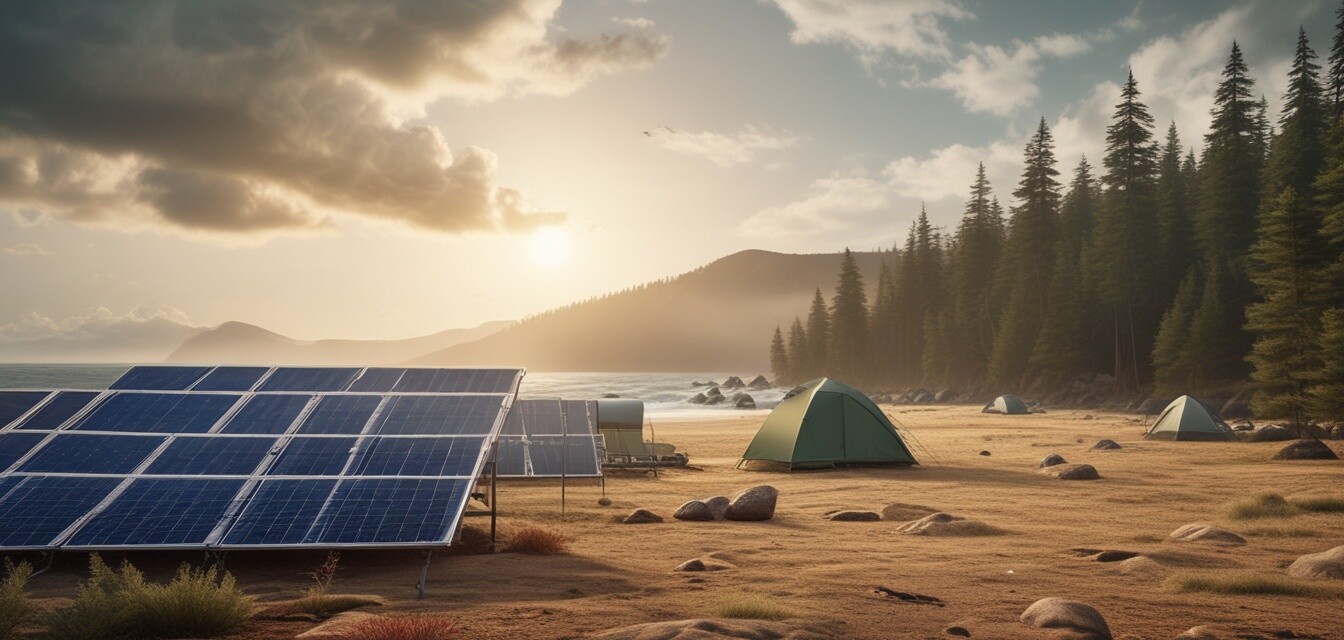
Evaluating solar gear performance in different environments
Key Takeaways
- Solar gear performance can vary significantly based on environmental factors.
- Optimal setup technique differs according to weather conditions.
- Regular maintenance is essential for efficient solar gear operation.
- Understand the limitations of solar power for the best camping experience.
- Always plan and test in controlled settings before heading into the wild.
When you're out in nature with your solar-powered camping gear, understanding how different environments can affect performance is crucial. Whether you are nestled in the woods, hiking in the mountains, or camping at the beach, variables such as sunlight availability, temperature, and humidity can significantly impact the efficiency of your gear. This guide will help you assess how well your solar gear performs across various outdoor settings, enabling you to enjoy a sustainable camping experience.
Factors Affecting Solar Gear Performance
Before embarking on your adventure, it's essential to understand key environmental factors that influence solar gear performance:
| Environmental Factor | Impact on Solar Gear |
|---|---|
| Sunlight Availability | Direct sunlight significantly improves the energy output of solar gear. |
| Temperature | High temperatures can enhance efficiency, but extremely high temps may reduce lifespan. |
| Humidity | High humidity can lead to condensation and potential equipment damage. |
| Cloud Cover | Overcast conditions can dramatically reduce energy absorption. |
| Terrain | The angle of panels relative to the sun can affect energy capture. |
Assessing Performance in Various Environments
1. Forest Settings
In forest settings, tall trees can create shade, limiting direct sunlight exposure. To optimize performance:
- Choose open areas during peak sun hours.
- Adjust the angle of your solar panels to capture maximum sunlight.
- Consider using portable solar trackers for efficiency.
2. Mountain Environments
Mountain areas can offer varied weather conditions and sunlight exposure:
- Altitude can improve solar intensity, but be aware of sudden weather changes.
- Position your gear to avoid shaded regions from rocks or nearby peaks.
- Ensure your equipment can withstand cooler temperatures.
3. Beach Locations
Beaches typically offer ample sunlight but can pose challenges:
- Be mindful of sand getting into equipment; use protective covers.
- Consider the effects of salty air, which can damage solar panels if not regularly maintained.
- The reflection from water can enhance sunlight, so position wisely.
4. Urban Areas
Camping in urban environments provides unique challenges:
- Look for rooftops or open terraces for better sunlight exposure.
- Avoid shadow from tall buildings.
- Prepare for potential air pollution that can affect solar gear efficiency.
Best Practices for Solar Gear Maintenance
Regular maintenance ensures that your solar gear operates efficiently, regardless of the environment:
- Clean solar panels regularly to remove dirt and debris.
- Check for loose connections before hitting the road.
- Store gear in a dry place when not in use to prevent moisture buildup.
- Regularly monitor the battery/energy storage levels.
Testing Your Gear Before the Trip
Before heading out, conduct tests in controlled settings to understand how your equipment behaves:
- Set up your gear in your backyard to assess performance.
- Track energy output during different times of the day.
- Simulate adverse weather conditions to see how your gear holds up.
Conclusion
Evaluating how solar gear performs in different environments is essential for any outdoor enthusiast. By understanding the various factors that influence efficiency and implementing best practices, you can maximize the benefits of solar power while enjoying the great outdoors. For additional resources, check out our other guides on buying solar camping equipment or solar camping tents. Happy camping!